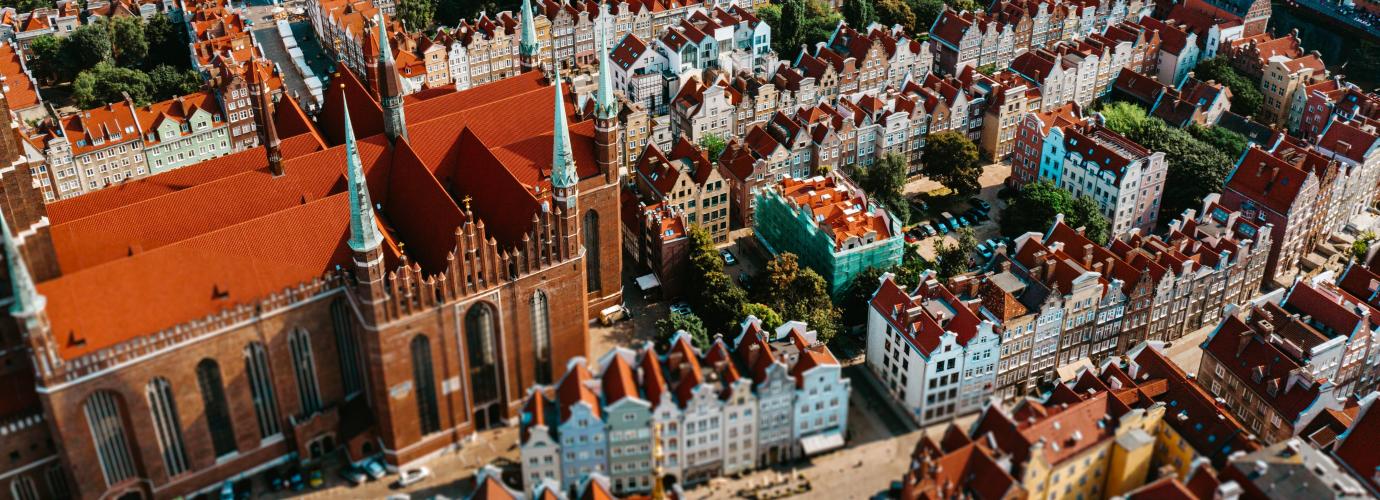The beginning of the Polish State is associated with the dynasty of Piast ruling at the end of the 10th century. In 966 Mieszko I, the founder of the dynasty, was baptised and introduced Christianity to Poland. Thus, Poland entered into the sphere of Christian and Latin traditions. The Piasts united the lands that covered roughly the present territory of Poland. During the following centuries, the Polish State expanded eastwards. After uniting with Lithuania under the Jagiellonian dynasty in 1385, both countries ruled over vast territories situated between the Baltic Sea and the Black Sea. Poland established a constitutional monarchy, among the first ones in Europe, and granted a wide range of rights and freedoms to its people. During the 15th and 16th centuries, the Polish State enjoyed great political and cultural importance in Europe.
In the second half of the 17th century, Poland became involved in long wars, with the State of Moscow and the Turks in the East and Sweden in the North-West, which impoverished the country. The Polish State was gradually weakened. The political freedom based on the Constitution of 3 May 1791 (the first constitution in Europe and the second, next to the American one, in the world) was limited by the powerful aristocratic families, while the position of the Polish kings was diminished. At the same time, the neighbouring countries, Russia, Prussia and Austria, were increasing their political power. This led to three partitions of Poland in 1772, 1793 and 1795 and to Poland’s disappearance from the map of Europe. The history of the Polish nation thereafter is one of many efforts to regain independence, such as the insurrection led by Tadeusz Kościuszko in 1794, Polish military efforts during the Napoleonic wars and the uprisings in 1830 and 1863.
Poland returned to the map of Europe as an independent state after the First World War in 1918. On 1 September 1939, the invasion of Poland by Germany started World War II. After dramatic struggles under the Nazi occupation, during which one-fifth of the population perished, Poland was liberated from the Nazi occupation in 1945 by the Soviet army, with the Polish army formed in the Soviet Union fighting alongside. Consequently, Poland fell under the communist regime for over 40 years.
The country was rebuilt from war destruction and a system of centralised economy was introduced. The following years saw economic instability and deteriorating living conditions. Combined with authoritarian rule, this led to growing opposition which culminated in the formation of the Solidarity trade union in 1980. In 1981 the martial law was imposed and for many years Solidarity became an underground movement and grew in power, enjoying the support from the Catholic Church and Western democracies.
The year 1989 was a crucial year in the contemporary history of Poland. After the so-called ‘roundtable’ agreements, resulting from the negotiations between the representatives of the then opposition and the government, the first partially free parliamentary election took place in June 1989. The first totally free and democratic elections were held in 1991. A dynamic period of political and economic transformation began. The rebirth of parliamentary democracy led to the creation of many political parties and the development of independent mass media. The freedom of speech and openness in the public life reinforced public control over state authorities operating in accordance with, and within the limits of, the law. The decentralisation of public authority continued along with the local government reform. The introduction of the market economy limited the State intervention in the economy and initiated restructuring and privatisation processes.
In the 1990s, Poland entered the path leading to integration with Western European countries. In 1991, it became a member of the Council of Europe and concluded the Association Agreement with the European Community, which was ratified by the European Community in 1993. Poland became a member of the OECD in 1996 and the North Atlantic Treaty Organisation (NATO) in 1999. On 1 May 2004, it became a Member State of the European Union.

